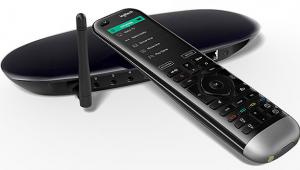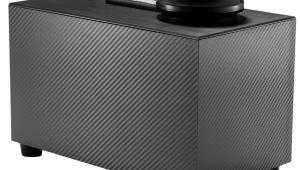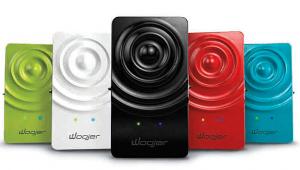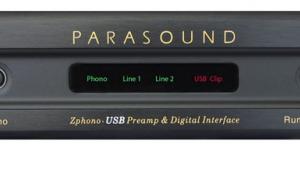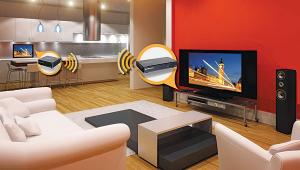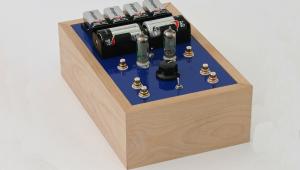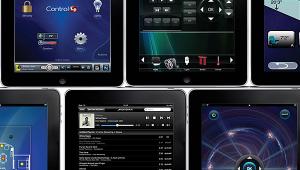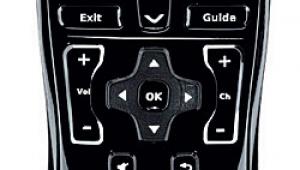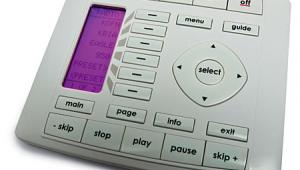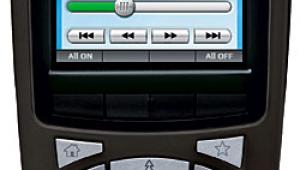D-BOX Odyssee Series 2 Motion-Simulation System
Even I can't believe how far I'll travel for a great home theater demo. Hidden up in the cold, cold reaches of Montreal, Quebec, Canada, is the headquarters of D-BOX Technologies, which features the coolest faux living room in North America. I aimed to try their Odyssee motion simulator firsthand. My brother told me that home theater gear depends upon the demo perhaps more than any other product, and this was never truer than with the Odyssee.
What Is It?
A series of powerful motors (or actuators) capable of moving hundreds of pounds of man and furniture, work in precise harmony with a DVD to add another dimension of immersion to the movie experience, watching the same big-studio discs you already own or can buy at any retailer. The entry-level two-axis configuration tilts you (and your seat) front and back, left and right, via two discrete actuators. This approach works much the same way a 2.0 PCM downmix conveys much of a multichannel soundtrack. The full three-axis, four-actuator system adds critical up and down motion.

To incorporate one of D-BOX's Integrated Actuator sets into qualified seating—a sofa, love seat, or individual recliner—contact an authorized Odyssee installer or send your Odyssee set to the factory of a participating seating manufacturer. D-BOX also offers platform-based Actuator sets for installation under extruded-aluminum seating platforms, from 66 to 130 inches wide and up to 58 inches deep. These will accommodate the furniture you already own or plan to buy—should it be from a manufacturer not qualified by D-BOX or in a style that doesn't lend itself to the integration of the actuators.
Mechanically, hydraulic pistons deliver the motion in the horizontal orientation of the platform-based systems, while the vertically oriented integrated systems achieve this with a direct-drive mechanism. A single actuator can create up to four different vibrations at any given moment while simultaneously generating movement at up to two Gs of acceleration.
The Magic Box
The Odyssee Kinetron controller is a sophisticated multimedia component that operates the actuators in two different ways. First, the motion artists at the D-BOX lab create F/X Motion Codes, pieces of software that are unique to each DVD or D-Theater D-VHS title that the team selects to enhance. This crucial extra step of writing custom software helps make D-BOX so unusual. . .and so effective.

With a creative eye and technical prowess, a programmer watches the film and assigns specific motions appropriate to the onscreen action, be it a shootout, a car chase, or an explosion. Knowledge of the film is essential, and the programmers sometimes fight for the opportunity to work on a specific movie. The resulting data file totals about 6 to 8 megabytes for an average 90-minute movie, which benefits from perhaps 20 minutes of actual motion. An action extravaganza like The Matrix Reloaded will receive closer to 90 minutes of prescribed motion.
The Kinetron's 40-gigabyte hard drive stores a possible 10,000 F/X Motion Codes and arrives preloaded with hundreds of D-BOX-ified title codes. It also includes a one-year subscription of updates via CD-ROM for the 10 to 12 titles that are added monthly. You can easily transfer these to the onboard database via the built-in CD drive. An additional year's subscription is $550, although there's talk of a future version of the product with an Ethernet port to download updates directly from the Internet.
For titles not yet supported by official codes, the Kinetron also performs much simpler signal processing that uses a series of pattern-recognition algorithms to key off of the analog audio outputs of any source with at least two channels of audio. This Audio Mode utilizes the left, right, and LFE channels to generate motion effects in real time and provides passthrough connections. Vaguely similar to more-conventional shaker devices that rely upon the bass inherent in a movie soundtrack to create their tactile effects, this option definitely provides some effects but isn't nearly as detailed.
Either way, the system requires at least a two-channel audio signal to synchronize the effects. The Kinetron connects to your DVD or D-VHS player via a coaxial digital audio output—which it uses as a synchronization signal that can then be passed through to the receiver—and to the actuator set in the seating area via the included shielded CAT-5 cable. Each actuator module also requires an AC power source; two actuator sets can run on a single 15- to 20-amp household circuit.
Let's Play
Upon startup, the controller automatically recognizes a supported disc, reading data from the first 15 minutes of the movie. You can also manually select the DVD from a list, using either the Kinetron's LCD panel or an external control system via the included RS-232 interface. In both cases, the system's necessary load time is about 30 seconds, as the codes move from the hard drive to system memory. You can then jump around the movie to your heart's content, with the freedom to pause the effects only or the movie itself. There's roughly a two-second lag upon resuming play, as the data is buffered again.

There are four user-selectable modes: soft, medium, intense, and extreme. Within each are 15 levels of motion intensity. Yes, this is a remarkably complex system with a series of up to five computers in simultaneous communication with one another—automatically noting and adjusting for viewer weight, compensating when someone leaves his seat, and so on. However, it's also remarkably simple for the user, with the convenience of a wireless remote.
My Odyssey
After a cup of fine Canadian coffee, I could properly appreciate not just the big jolts of a perfectly tweaked Odyssee setup but also the equally enjoyable nuances that work subconsciously to sell the cinematic illusion.
D-BOX tells me that the current Series 2 version offers a more-refined technology, and I believe it. First up was a clip from Super Speedway on a two-axis system, installed inside a comfy recliner. Driving titles, in particular, are a great way to show off what the Odyssee system can do, as watching a good film is akin to being a passenger on an interesting ride. Much of the automotive sensation occurs where butt meets bucket seat. Sure enough, I felt the bumps in the road, even the seams in the asphalt, much as I would if I were actually driving that track at a high speed. My brain wanted to believe it was all real, even the "whoosh" as we zipped under a low bridge.
When I moved up to the three-axis system, the details were even more pronounced, with more-noticeable banks in the tracks, more of a lean into the turns, and added kick in the bumps. As Speedway taught me, professional race-car testers gather all sorts of telemetry during their drives, and D-BOX hopes to someday gain access to that data and apply it to their software. Of course, good audio—particularly a powerful sub with extended low-frequency response—and big, clear video are essential to the overall effect, yet I know that this DVD will never be quite as engaging in my suddenly humbled home theater.
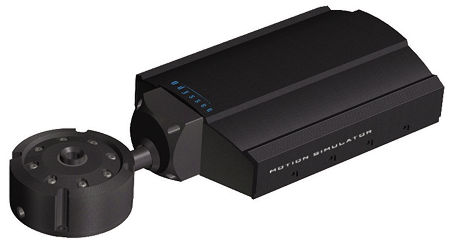
Next up was the plane crash from Cast Away. Although I was surprised to learn how little dedicated LFE this scene carries, the turbulence, the engine shudder, and the dragging of the enormous cargo container were all unmistakable and more intimidating than ever. In contrast to all of this physical action, the use of the Odyssee on Vertical Limit subtly but significantly enhanced the music, and thereby the mood, with precise timing that made an emotional scene even more impactful. The Transporter underscored my assertion about the fun of movie driving, while The Fifth Element seemed even bigger, louder, and more in-my-face than usual.
Showoff scenes are wonderful, of course, but I was curious how the system would fare throughout an entire movie. I'm on record with my opinion that The Matrix Reloaded is a dramatic mess, but could Odyssee turn tap water into Chablis? Part of the film's problem is the seemingly interminable dull talking, and there's not a lot that a motion simulator can do to improve that; in fact, the excitement of the effects made me more eager than ever for the blah-blah-blah to end and the crash-boom-bang to begin.
The actuators underscore everything that they can. When given the ideal material, they raised the movie's visceral experience to an entirely new level. Reloaded used to feel long, but the thrill of motion actually compensated for certain screenplay sins, buoying the entire two-plus hours. Odyssee can't make a bad movie good, but it can create good parts that weren't evident before and can, in some cases, render a good movie great. Afterward, I found myself a tad weary—less physically so than emotionally drained, due to the anticipation and unpredictability of it all. The Odyssee is a grand indulgence if you're looking to take your home theater one big, worthwhile step further.
Highlights
• Adds an undeniably exciting effect to movies
• Easy to use, with a remote control
• Fully functional with hundreds of available DVDs and more on the way

